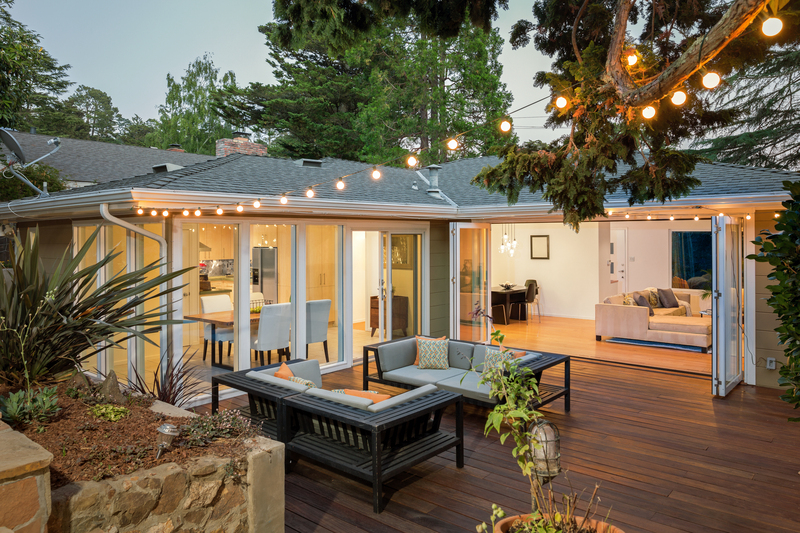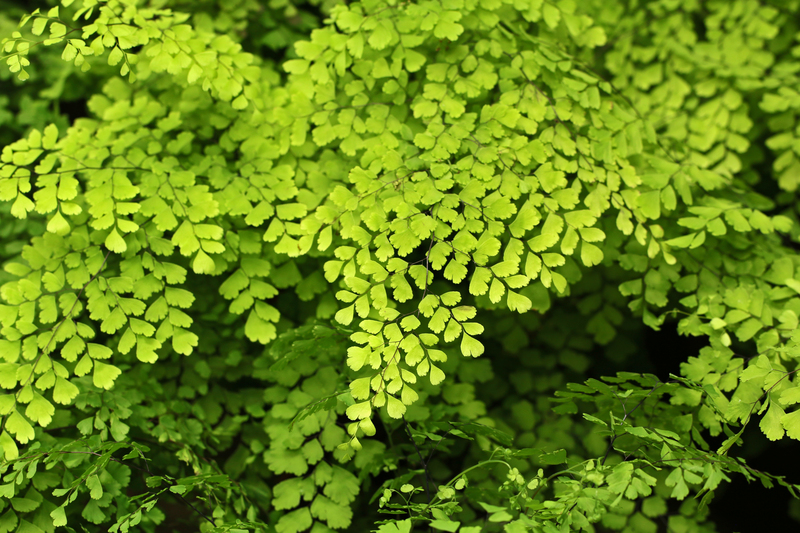An Introduction to the Craft of Container Gardening
Posted on 22/06/2025
An Introduction to the Craft of Container Gardening
Container gardening is one of the most versatile and rewarding ways to bring greenery into your life, regardless of space or climate restrictions. Its growing popularity is fueled by urbanization, renewed interest in sustainable living, and the joy of creating beautiful, productive spaces--even in the smallest corners. This comprehensive guide will introduce you to the art and science of container gardening, offering practical advice and inspiration to help you start your own lush, thriving garden in containers.

What is Container Gardening?
Container gardening refers to the practice of growing plants--such as flowers, vegetables, herbs, or even small trees--in pots and containers rather than in the ground. It is an age-old tradition, dating back to ancient civilizations that cultivated plants in decorative pottery. Today, container gardening thrives as both a creative hobby and a practical solution for anyone with limited space.
- Ideal for apartment dwellers, patios, and balconies
- Allows control over soil quality and moisture levels
- Great solution for poor native soil or limited sun exposure
- Enables easy relocation of plants
Why Choose Container Gardening?
Container gardening is attractive because it is accessible to every kind of gardener. Whether you're a complete beginner or a seasoned horticulturist, this approach brings several key benefits:
- Flexibility: Move your containers to chase the sun or shelter from storms.
- Creativity: Mix and match colors, heights, and textures for endless design options.
- Accessibility: Less bending and stooping make this a great choice for those with mobility issues.
- Control: Manage soil pH, fertility, and water with precision.
- Year-Round Growing: Transportable containers make it possible to overwinter delicate plants or start seedlings indoors.
Getting Started: Choosing the Right Containers
The foundation of successful container gardening is, of course, the container itself. Selecting the right type of container is crucial to your garden's health and longevity. Here are a few factors to consider:
Materials Matter
- Clay and Terracotta: These classic pots offer breathability but can dry out quickly. Best for drought-tolerant plants.
- Plastic: Lightweight and moisture-retentive. Ideal for balconies and larger containers.
- Wood: Natural and good for insulation; however, make sure wood is untreated to avoid toxic chemicals.
- Metal: Modern and stylish, but can get very hot or cold. Best used with liners.
- Fiberglass and Resin: Durable, light, and available in many styles.
Size and Depth
- Small Containers: Suitable for herbs and compact flowers.
- Medium to Large Containers: Best for vegetables, fruiting plants, and small shrubs.
- Ensure the container is deep enough for the plant's root system--usually a minimum of 6-12 inches depending on the species.
Drainage: A Non-Negotiable Element
All containers must have adequate drainage holes to prevent root rot. If your beautiful container lacks holes, consider drilling some yourself or using it as a decorative 'cachepot' with a liner inside that features good drainage.
The Ideal Potting Mix for Container Gardens
Soil is the heart of container gardening. Using garden soil inside pots is a common mistake because it compacts and drains poorly. Instead, invest in high-quality potting mix. It is:
- Lightweight and well-aerated
- Free from weeds and pathogens
- Enriched with slow-release fertilizers and organic matter
You can create your own blend by combining peat moss or coco coir, perlite or vermiculite, and compost. Specialty mixes are available for succulents, orchids, or acid-loving plants, offering targeted support for their unique needs.
Understanding Watering and Drainage in Container Gardening
Watering is often the most challenging part of container gardening. Containers dry out more quickly than in-ground plantings, especially in sun-baked spaces or windy balconies. Here's how to master the craft of watering:
Best Practices
- Regular Checks: Test soil moisture with your finger--water when the top inch feels dry.
- Water Deeply: Soak until water runs from the drainage holes.
- Time it Right: Water early morning or late afternoon to reduce evaporation.
- Mulch: Add organic mulch (like bark chips or straw) to retain moisture.
Self-watering planters and drip irrigation systems can make the job easier, especially for busy gardeners or when you're away from home.
Fertilizing Container Plants: Essential Nutrients
An important aspect of container gardening is fertilizer management. Because frequent watering can leach nutrients from the soil, most container-grown plants benefit from supplemental feeding.
- Slow-Release Fertilizer: Mix into soil at planting time for sustained nutrition.
- Liquid Feed: Apply every two to four weeks during peak growing season for a nutrient boost.
- Organic Options: Fish emulsion, compost tea, or seaweed extract for a more natural approach.
Selecting the Best Plants for Container Gardens
The beauty of container gardening lies in its diversity. You can grow almost anything, provided you match the plant's needs to your site's conditions and the container's limitations. Here are some popular choices to inspire you:
Edibles
- Herbs: Basil, mint, thyme, oregano, chives
- Leafy greens: Lettuce, spinach, arugula
- Small veggies: Cherry tomatoes, peppers, radishes, carrots
- Dwarf fruit trees: Citrus, figs, blueberries (in large containers)
Flowers
- Annuals: Petunias, impatiens, marigolds, cosmos
- Perennials: Hostas, daylilies, coreopsis
- Bulbs: Tulips, daffodils, crocus (excellent for spring color)
Foliage and Ornamental Plants
- Ferns
- Succulents and cacti
- Ornamental grasses
- Indoor foliage plants: Pothos, snake plant, philodendron
Always consider the amount of sunlight your location receives and select plants that will thrive in either full sun, partial shade, or shade.
Container Gardening Design Principles
Beyond plant selection, the arrangement of your containers can turn a simple setup into a stunning garden display. Here are some tips to help your container gardening efforts stand out:
The 'Thriller, Filler, Spiller' Formula
- Thriller: Bold, upright plant as a focal point (e.g., ornamental grass, dwarf conifer)
- Filler: Mounding plants to fill the center space (e.g., geraniums, coleus)
- Spiller: Trailing plants cascading over the edges (e.g., sweet potato vine, ivy)
Mixing Colors, Textures, and Heights
- Use a color wheel for pleasing combinations--complementary or monochromatic schemes work beautifully.
- Combine large, dramatic leaves with fine-textured plants for visual interest.
- Vary plant heights to create dimension and layers.
Grouping and Staging
- Gather containers in odd-numbered clusters for a natural look.
- Place largest pots at the back or center, with smaller ones around them.
- Use pedestals, benches, or hanging planters to elevate certain containers for variety.
Year-Round Interest: Seasonal Container Gardening
With careful planning, your container garden can offer beauty in every season:
- Spring: Plant bulbs for early blooms and cool-season annuals
- Summer: Showcase heat-loving annuals and edible crops
- Autumn: Refresh pots with chrysanthemums, ornamental kale, and pumpkins
- Winter: Try evergreens, holly with berries, and branches of red dogwood; in warm climates, winter pansies thrive
Troubleshooting Common Container Gardening Problems
Like all gardening methods, container gardening comes with its own challenges. Here are quick solutions to typical problems:
- Wilting or Yellow Leaves: Check for over or under-watering; inspect roots for rot or compaction.
- Pests: Use insecticidal soap or physical barriers like netting; keep foliage dry to avoid fungal growth.
- Nutrient Deficiency: Add liquid fertilizer; consider repotting if soil is exhausted.
- Leggy Growth: Move container to a sunnier spot or prune to encourage bushiness.
Eco-Friendly and Creative Container Gardening Ideas
Embrace sustainability and creativity in your container gardening journey:
- Reuse and Recycle: Upcycle old buckets, wooden crates, or even boots as quirky planters.
- Vertical Gardens: Maximize small spaces with wall-mounted pots or stacked planters.
- Water Conservation: Install drip irrigation and choose drought-resistant plants.
- Pollinator-Friendly: Grow nectar-rich flowers like lavender and salvia to attract bees and butterflies.

Container Gardening for Every Space
No matter your living situation, container gardening offers endless possibilities:
- Balconies: Rail planters and hanging baskets create lush privacy.
- Patios and Decks: Large containers anchor living spaces with style.
- Windowsills: Compact herb gardens or succulents bring life indoors.
- Entryways: Seasonal containers add curb appeal to your home.
Conclusion: Start Your Container Gardening Adventure
Container gardening is an accessible, rewarding way to enjoy the art of gardening--no matter your level of experience or space available. By choosing the right containers, soil, and plants, and following best practices for care, you can create vibrant displays that evolve through the seasons. Let your creativity blossom as you master this age-old craft and turn even the most modest spaces into thriving, green sanctuaries. Happy gardening!

.jpg)

